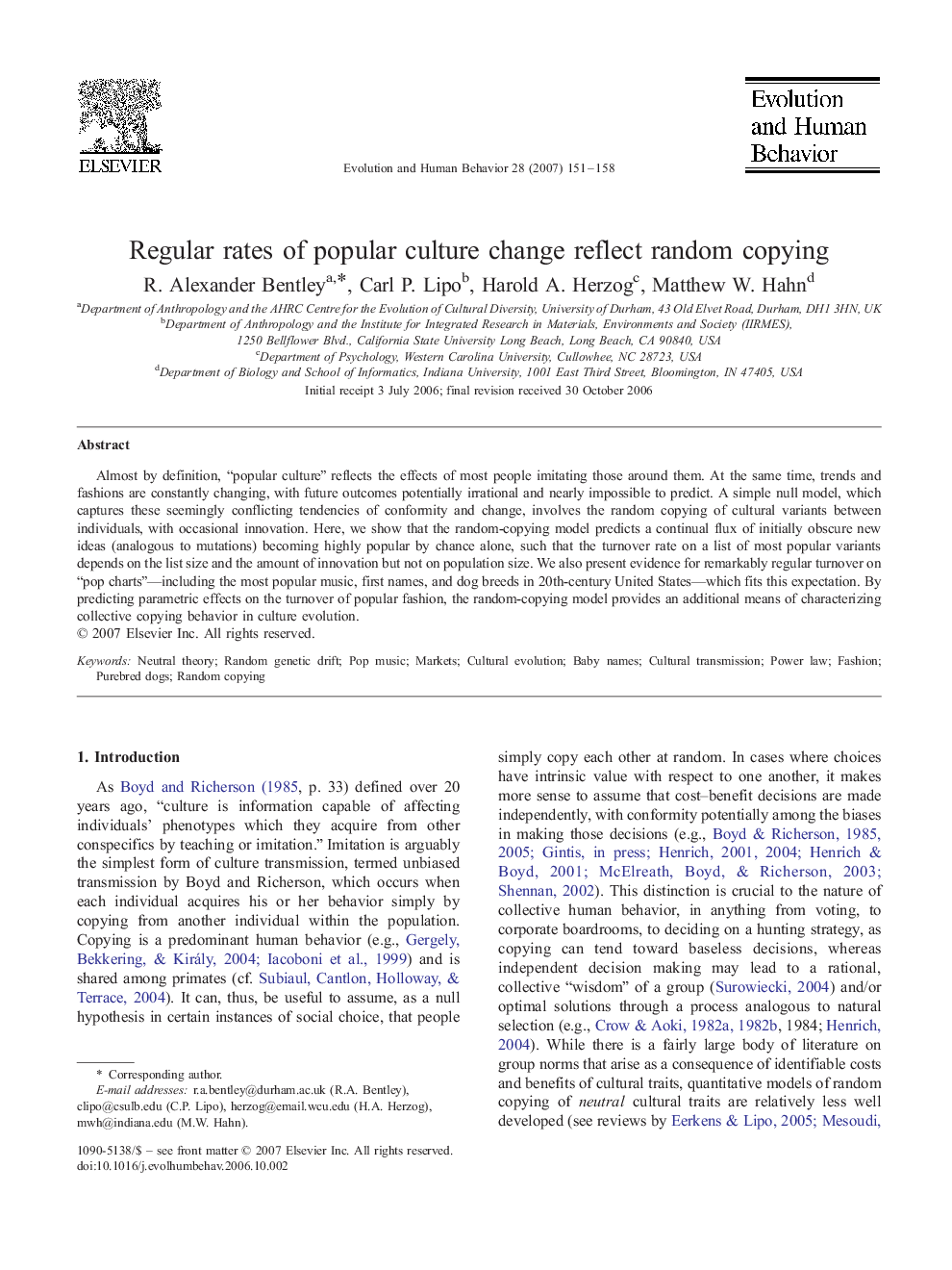| Article ID | Journal | Published Year | Pages | File Type |
|---|---|---|---|---|
| 943499 | Evolution and Human Behavior | 2007 | 8 Pages |
Almost by definition, “popular culture” reflects the effects of most people imitating those around them. At the same time, trends and fashions are constantly changing, with future outcomes potentially irrational and nearly impossible to predict. A simple null model, which captures these seemingly conflicting tendencies of conformity and change, involves the random copying of cultural variants between individuals, with occasional innovation. Here, we show that the random-copying model predicts a continual flux of initially obscure new ideas (analogous to mutations) becoming highly popular by chance alone, such that the turnover rate on a list of most popular variants depends on the list size and the amount of innovation but not on population size. We also present evidence for remarkably regular turnover on “pop charts”—including the most popular music, first names, and dog breeds in 20th-century United States—which fits this expectation. By predicting parametric effects on the turnover of popular fashion, the random-copying model provides an additional means of characterizing collective copying behavior in culture evolution.
